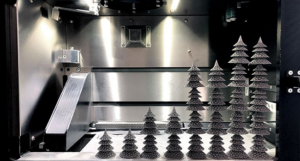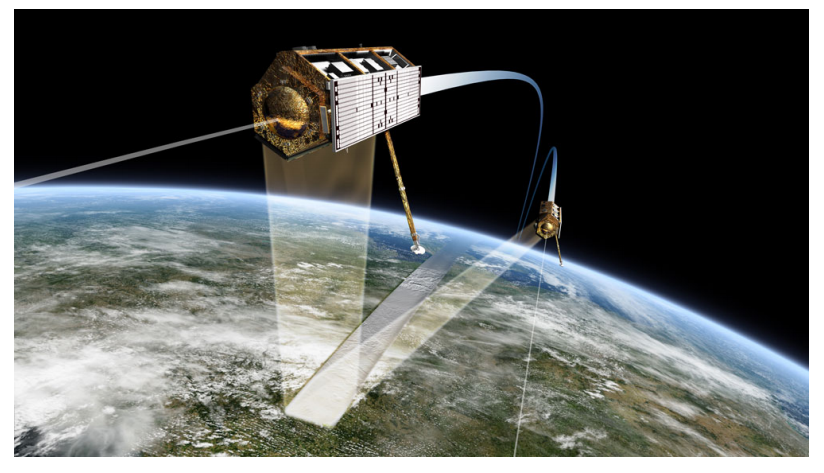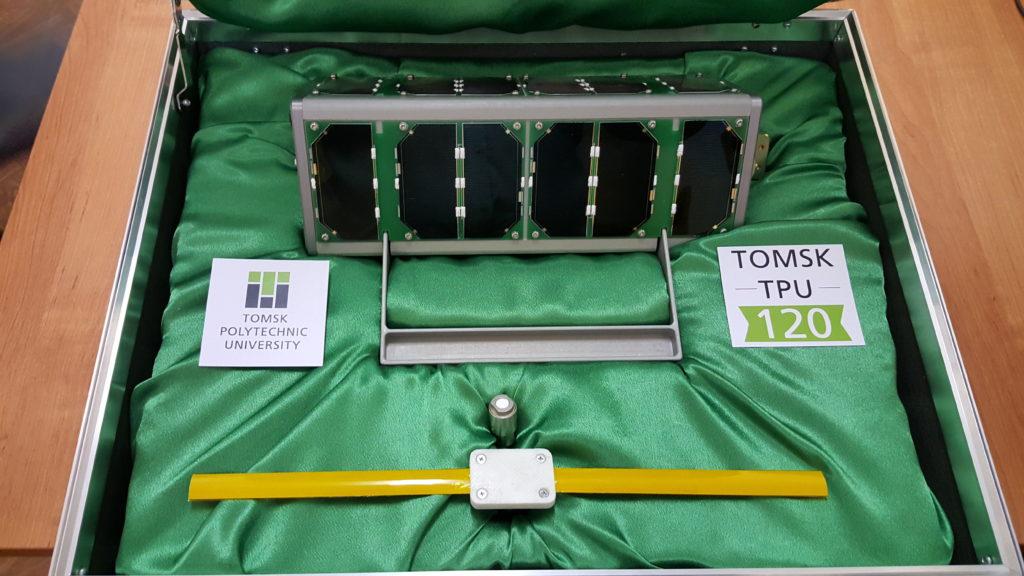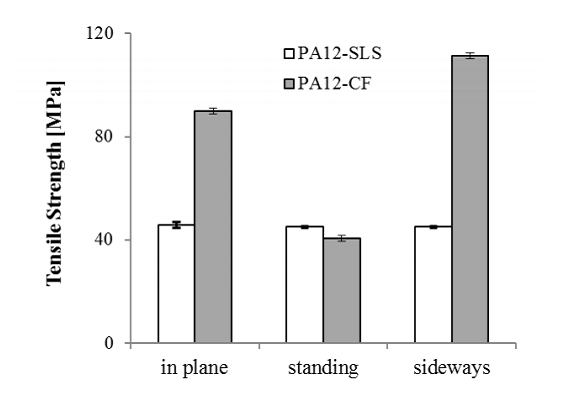3D Printing News Briefs: November 20, 2019
We’re starting out with some formnext news in today’s 3D Printing News Briefs, as the show is currently taking place in Frankfurt this week. SCANLAB is introducing a new scan system control extension at the show. We also have some metal stories today – Desktop Metal has launched 4140 chromoly steel for its Studio System, while QuesTek Innovations and the German Aerospace Center are exploring the potential of a high-temperature aluminum alloy. Moving on, XJet’s Carmel 1400 AM system was installed at KU Leuven University. Finally, Additive Minds investigated EOS 3D printing without the use of supports.
SCANLAB Integrating Process Data into 3D Printing
 Laser scanning solutions manufacturer SCANLAB GmbH is at formnext 2019 this week, and will be introducing a scan system control extension that uses a smart data-acquisition interface that reads external sensors. It’s a functioning model of an intelligent interface, and can integrate sensor data into scan system control – giving AM users the ability to inquire about, and evaluate, centralized process data.
Laser scanning solutions manufacturer SCANLAB GmbH is at formnext 2019 this week, and will be introducing a scan system control extension that uses a smart data-acquisition interface that reads external sensors. It’s a functioning model of an intelligent interface, and can integrate sensor data into scan system control – giving AM users the ability to inquire about, and evaluate, centralized process data.
Two tradeshow demonstrators were created that show how diverse the integrable sensor range is. The first incorporates a surface-temperature pyrometer into the scan head control, and the sensor system’s data merges with laser beam position data. In the second, an OCT (optical coherence tomography) sensor from Precitec is integrated to measure the powder bed’s surface topography. Visit SCANLAB at formnext this week at Booth B41, Hall 12.0.
Desktop Metal Launches 4140 Chromoly Steel for Studio System
 Massachusetts-based company Desktop Metal is expanding its material portfolio by launching 4140 chromoly steel for industrial applications for its office-friendly Studio System. 4140 is a versatile material, with high tensile strength, abrasion and impact resistance, and toughness. DM Studio Systems users can now use this material to 3D print parts like connecting rods, couplings, pinions, press brake tools, and more for industries including automotive, agriculture, industry, and defense.
Massachusetts-based company Desktop Metal is expanding its material portfolio by launching 4140 chromoly steel for industrial applications for its office-friendly Studio System. 4140 is a versatile material, with high tensile strength, abrasion and impact resistance, and toughness. DM Studio Systems users can now use this material to 3D print parts like connecting rods, couplings, pinions, press brake tools, and more for industries including automotive, agriculture, industry, and defense.
“As global demand for the Studio System grows, Desktop Metal is broadening its materials portfolio to include 4140 chromoly steel, enabling designers and engineers to print a broad variety of critical industrial applications, such as couplings, forks, pinions, pump shafts, sprockets, torsion bars, worm gears, connecting rods, and fasteners. Now, teams around the world will be able to leverage the Studio System to iterate quickly on 4140 prototypes and ultimately produce end-use, customer-ready parts faster and more cost-effectively,” said Desktop Metal’s CEO and Co-Founder Ric Fulop.
QuesTek’s 3D Printable Aluminum Alloy
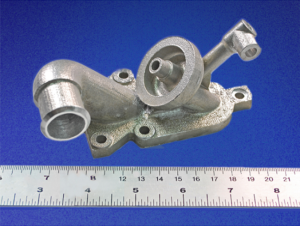 Integrated Computational Materials Engineering (ICME) technologies leader QuesTek Innovations LLC and the German Aerospace Center (DLR) are working on a joint project to explore the potential of QuesTek’s new 3D printable high-temperature aluminum (Al) alloy. The material, able to perform at temperatures between 200-300°C in its as-built condition, is being developed by QuesTek under several US Navy-funded Small Business Innovation Research awards, and is believed to be the first powdered Al alloy to meet necessary requirements without any subsequent heat treatment. The DLR will be 3D printing demonstration components with the material, which can be used to fabricate more lightweight precision components like heat exchangers.
Integrated Computational Materials Engineering (ICME) technologies leader QuesTek Innovations LLC and the German Aerospace Center (DLR) are working on a joint project to explore the potential of QuesTek’s new 3D printable high-temperature aluminum (Al) alloy. The material, able to perform at temperatures between 200-300°C in its as-built condition, is being developed by QuesTek under several US Navy-funded Small Business Innovation Research awards, and is believed to be the first powdered Al alloy to meet necessary requirements without any subsequent heat treatment. The DLR will be 3D printing demonstration components with the material, which can be used to fabricate more lightweight precision components like heat exchangers.
“The accelerated design and development of a printable aluminum alloy capable of meeting so many current needs is especially exciting, as it will enable concurrent design of material composition and component geometry,” stated Greg Olson, QuesTek Chief Science officer. “Based on our internal test results, we see broad application of this material in manufacturing components for aerospace, satellite, automotive and high-performance racing.
“We are particularly pleased to be collaborating with the DLR. Their unrivaled reputation, expertise and close relationship with industry needs will bring an important new scope to our efforts.”
XJet’s Carmel 1400 3D Printer Installed at KU Leuven University
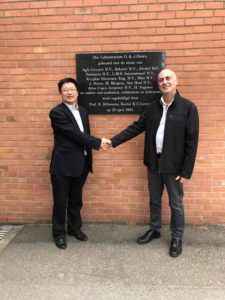
Professor Shoufeng Yang, KU Leuven, shakes hands with Avi Cohen, VP of Healthcare and Education at XJet.
For the first time, a 3D printing system has been installed at a European academic institution. XJet recently delivered its Carmel 1400 AM system to the KU Leuven University in Belgium, where it will be used to for university research and to help develop regional 3D printing medical opportunities. The 3D printer, and its proprietary NanoParticle Jetting (NPJ) technology, will be put to good use at the European research center, as academics will used it to explore medical applications and AM educational and research purposes. XJet’s zirconia material will also be used to 3D print ceramic medical models.
“Since the Carmel was installed, we are already reaping the benefits. The XJet system offers the high levels of precision and exceptional detailing required, levels which were previously impossible or extremely time-consuming in post-processing. The use of soluble support materials, with no harmful powders, makes it a much easier process and opens up opportunities to innovate that simply did not exist before,” said Professor Shoufeng Yang, who is heading the AM research at KU Leuven. “It’s an amazing and fantastic technology for R&D in universities and for the manufacturing industry, and it’s very exciting to be a part of. I believe that this is the best ceramic additive manufacturing method which can be easily upgraded into future multi-materials additive manufacturing, which is a grand challenge in the AM industry.”
XJet is also attending formnext this week – you can find the company at stand #C01 in Hall 12.1.
3D Printing Without Supports
Michael Wohlfart, DMLS Process Consultant for the EOS Additive Minds Process Consulting team, wrote an article on LinkedIn, titled “Building without support? Possibilities and limitations,” about the design aspect of printing without supports in metal powder bed fusion technology, which can reduce build time, material consumption, and cost. The three main reasons for supports are heat transfer, residual stress, and recoater forces, but there are workarounds for all three. In recoater forces, forces are acting on the part while spreading powder, and the recoater will wipe away parts not connected to the baseplate. Prop supports, such as cones and stacking parts, can be used to negate the need for a baseplate connection. Wolfhart discussed a few examples that were 3D printed on an EOS M290 out of titanium.
“Let’s move on to a more advanced design and even incorporate stacking,” Wohlfart wrote. “Since Christmas season is coming up, how about a Christmas tree designed with Siemens NX and pimped with nTopology? By turning it upside-down, the tree is self-supporting and the tree trunk can act as a shell for the next tree. You can see a small overlap of 0.1 mm in x-y-direction between the lattice and the solid parts in order to assure a good connection.”
To learn more, check out Wohlfart’s LinkedIn post.
Discuss these stories and other 3D printing topics at 3DPrintBoard.com or share your thoughts in the Facebook comments below.
The post 3D Printing News Briefs: November 20, 2019 appeared first on 3DPrint.com | The Voice of 3D Printing / Additive Manufacturing.
German Aerospace Center: Creating 3D Printed Polymer Antennas for Synthetic Aperture Radar (SAR) Systems
 Thesis student Jan Reifenhäuser at the Koblenz University of Applied Sciences explores the uses of 3D printing in creating improved antennas for multiple applications, outlined in ‘Investigation of a Plastic Printed Slotted Waveguide Antenna for Airborne SAR Applications.’ Reifenhäuser’s interest in creating antennae are directly related to a new project at the German Aerospace Center, as they begin working with synthetic aperture radar (SAR) technology in Ka-band—more specifically, the Ka-band PolInSAR system.
Thesis student Jan Reifenhäuser at the Koblenz University of Applied Sciences explores the uses of 3D printing in creating improved antennas for multiple applications, outlined in ‘Investigation of a Plastic Printed Slotted Waveguide Antenna for Airborne SAR Applications.’ Reifenhäuser’s interest in creating antennae are directly related to a new project at the German Aerospace Center, as they begin working with synthetic aperture radar (SAR) technology in Ka-band—more specifically, the Ka-band PolInSAR system.
 Due to requirements for excellence in mechanical accuracy, 3D printing was chosen as the manufacturing method with temperature-resistant plastic. The researchers involved in the project created two different antenna prototypes with plastic, and brass. Because the German Aerospace Center is so vast, boasting numerous different institutes at 20 different German sites, their resources are considerable in research for applications such as:
Due to requirements for excellence in mechanical accuracy, 3D printing was chosen as the manufacturing method with temperature-resistant plastic. The researchers involved in the project created two different antenna prototypes with plastic, and brass. Because the German Aerospace Center is so vast, boasting numerous different institutes at 20 different German sites, their resources are considerable in research for applications such as:
- Aeronautics
- Space
- Energy
- Transport
- Digitization
- Security
- Space Administration
In the Microwaves and Radar Institute, however, they focus solely on researching new technologies related to radar, remote sensing, and specifically for this study, airborne and satellite-based radar systems with synthetic aperture—used for better accuracy in providing data—from space, for example. SAR interferometry can act as an extension, with two different sensors taking images of the same thing. The altitude of objects being monitored can be precisely figured, which is helpful in mapping applications. Radar signals can also be used to obtain greater amounts of data about features such as surface condition.
“When reflected on ground, the polarization may change depending on the reflecting surface,” states Reifenhäuser. “This change is detected upon receiving the echo and conclusions can be drawn about the surface. This procedure is called polarimetry.”
Currently, the institute uses research aircraft (like the Do228-212 aircraft) for compiling SAR images, with their interest in such applications and the field of satellite-based systems increasing—and expanding toward Ka-band SAR systems as there is growing interest worldwide too. The Ka-band is distinguished by its shorter wavelength, and the ability to use ‘lower penetration depth’ into volume. This lends its uses to applications requiring precision, like the weather and climate research.
So far, however, scientists have had limited experience dealing with Ka-band SAR systems including single pass interferometric or polarimetric capabilities—there are increasing numbers of Ka-band hardware components becoming available to consumers through the commercial market though. In creating their Ka-band PolInSAR Demonstrator, DLR steps into the realm of aircraft-based Ka-band PolInSAR systems.
The 3D printed antenna had to be created with the following considerations:
- Center frequency of 35.75 GHz
- Bandwidth of at least 500 MHz
- Beam-width of 30° in elevation and 5° in azimuth
- Altitude range of 0 m up to 6000 m (the military test standard)
- Polarimetric operation
Testing was completed both with simulated exercises and physical measurement, with a brass antenna serving as a reference point for the 3D printed version. Both devices were tested at 21 °C in DLR’s compact test range (CTR), leaving the researchers to further to investigate ‘influence of temperature.’ Stating that it is advisable for using several single radiators to better define radiation characteristics, the researchers combined several of them together into a ‘group antenna,’ achieved by creating ‘slots’ in a waveguide wall.
Ultimately, the Ka-band PolInSAR system consists of multiple antennas set up to encourage beam forming, with the horizontal and vertical antennas alternated, resulting in a very small distance between polarizations. The researchers outsourced 3D printing of one prototype, while the other was milled from brass using traditional manufacturing methods. The 3D printed antenna was made of plastic but finished with a layer of copper. Thermal expansion had the greatest impact on both antennas—but the researchers also found very small differences between antenna gain and input reflection.
The team also noted that while testing the prototypes for the impacts of temperature change, they noticed a transformation in the signal phase. They also noted higher error in phase assignment as increased numbers of elements were arranged in the waveguide array. Ultimately however, similar antennas set at different frequency ranges exhibited the same character adjustments.
“Looking at the single element of the antenna array, it can be said that the small ascertained pointing error is compensated by the symmetry of the antenna due to the central feed,” concluded the researchers. “Printed plastic is therefore suitable as material for the antenna array of the Ka-band PolInSAR system.”
Some industries have actually been using 3D printing for decades, mainly for prototypes, but in recent years, many more functional parts are being fabricated and relied on—whether created in plastic, metal, or other materials, from conformal phased array antennas to sensors and wearables and even wearable antennas. Find out more about antennas being 3D printed by the German Aerospace Center here.
What do you think of this news? Let us know your thoughts; join the discussion of this and other 3D printing topics at 3DPrintBoard.com.
[Source / Guide: ‘Investigation of a Plastic Printed Slotted Waveguide Antenna for Airborne SAR Applications’]
Researchers Investigate Applicability of Using 3D Printing for Mass Production of Satellites
As the world works to find faster, more cost-effective ways to get to space, it’s necessary to test out innovative, modern technologies, such as 3D printing, rather than stick to the more conventional but expensive methods. Most current 3D printed thermoplastic satellites are developed as part of academic projects that have a low budget, such as the small Tomsk-TPU-120, and it’s very important to achieve fast, flexible, and automated serial production of reliable satellites for less money.
This is the subject of a paper, titled “Material Characterization of Additively Manufactured PA12 and Design of Multifunctional Satellite Structures,” that was written by a collaborative group of researchers from the the German Aerospace Center (DLR), the Fraunhofer Institute for Manufacturing Engineering and Automation (IPA), and the University of Stuttgart Institute of Space Systems (IRS).
The abstract reads, “Increasing cost pressure on satellite builders and their suppliers push the motivation to open up for new designs and processes. This paper investigates the applicability of thermoplastic additive manufacturing for mass production of satellites. First, the potential of the cost-effective 3D-printing material Polyamide 12 for space structures is examined. Tests include mechanical and thermal-vacuum properties. In the second step, a multifunctional technology demonstrator is designed and a first qualification test is performed. This demonstrator integrates electronic and thermal management components and shows considerable volume savings. Additionally, the automatable processes used for manufacturing enable further cost reductions in series production.”
The researchers worked to demonstrate the potential of their multifunctional, inexpensive, 3D printed satellite, first by testing how usable PA 12 – an easily processed thermoplastic material – is for mass-produced aerospace applications like satellites, and then by designing and testing a multifunctional demonstrator, which is basically a “sandwich with a 3D-printed honeycomb core.”
“On the one hand, this makes so far unusable design space available,” the researchers said about their demonstrator’s structure. “On the other hand, it can be manufactured by highly automatable and flexible processes, for example by a combination of FFF printing and automated fiber placement (AFP). The demonstrator structure is used to show the possible solutions for integrating functions into the structure by 3D-printing. Furthermore, it demonstrates the potential of multifunctional structures for future satellites. To demonstrate the applied integration concepts, an additional shaker specimen is designed and tested.”
In order to test out both FDM and SLS 3D printing, the team used Stratasys’ carbon fiber-reinforced polymer Nylon 12CF and PA 2200 from EOS for their research, and performed mechanical, outgassing, and thermal vacuum tests on specimens produced in three different orientations in order to measure the Young’s Modulus and tensile strength. In regards to the thermal vacuum cycling test, the mechanical properties of the 3D printed specimens were slightly improved, though elongation at break decreased.
“The SLS processed pure PA shows mechanical properties very similar to the manufacturer specifications. It also does not show significant anisotropy with respect to the printing orientation. The carbon fiber reinforced PA, on the other hand, shows a strong anisotropy,” the researchers explained. “Regarding the in plane and sideways specimens, tensile strength is drastically increased by the reinforcement. The standing specimens, on the other hand, show reduced strength. Similar behavior can be observed regarding the Young’s Modulus. Young’s Modulus of the reinforced material, however, is always above the pure PA. Furthermore, it can be noted, that the standard deviation off all tests is less than 5 %.”

Test component for vibration testing; (a) the
printed honeycomb core with integrated electronics; (b) test component mounted on the shaker.
The team concluded that the PA materials do show good potential for inexpensive space applications, though an elaborate test program will be necessary for a true qualification process.
A technology demonstrator, which includes 3D printed cable ducts that integrate coaxial cables and cable bundles, was used to verify both the functionality and feasibility of the 3D printed satellites’ function-integration for electronic, propulsion, and thermal management components, and the researchers determined that, at least in this project, an integration of propulsion components was not feasible.
The researchers produced and submitted a test component, complete with a gyroscope sensor, connector, ultrasonic embedded wire, and other planned functions, to vibration testing. The component was made with a PETG honeycomb core, in order to “ensure that results on the functionality of the concept are available before the optimization of the printing process for the PEI honeycomb core.”
After the vibration test, the team detected no visible damage or change to natural frequency, and could verify the electronic system’s total functionality.
“The technology demonstrator points out the capability of multifunctional sandwich structures for satellites. The concept makes so far unusable design space accessible and can generate considerable volume savings. A First successful vibration test confirms the design,” the team concluded. “A weight reduction, on the other hand, is unlikely since printed honeycomb is not lighter than standard aluminum honeycombs. However, the multifunctional structure offers further cost saving by an automated production suitable for mass production and reduced assembling costs.”
The researchers determined that several additional steps, such as a comprehensive cost analysis, are required in order to present a “holistic evaluation of the presented concept”
Co-authors of the paper are Simon Hümbert, Lukas Gleixner, Emanuel Arce, Patrick Springer, Michael Lengowski, and Isil Sakraker Özmen.
Discuss this research and other 3D printing topics at 3DPrintBoard.com or share your thoughts below.

